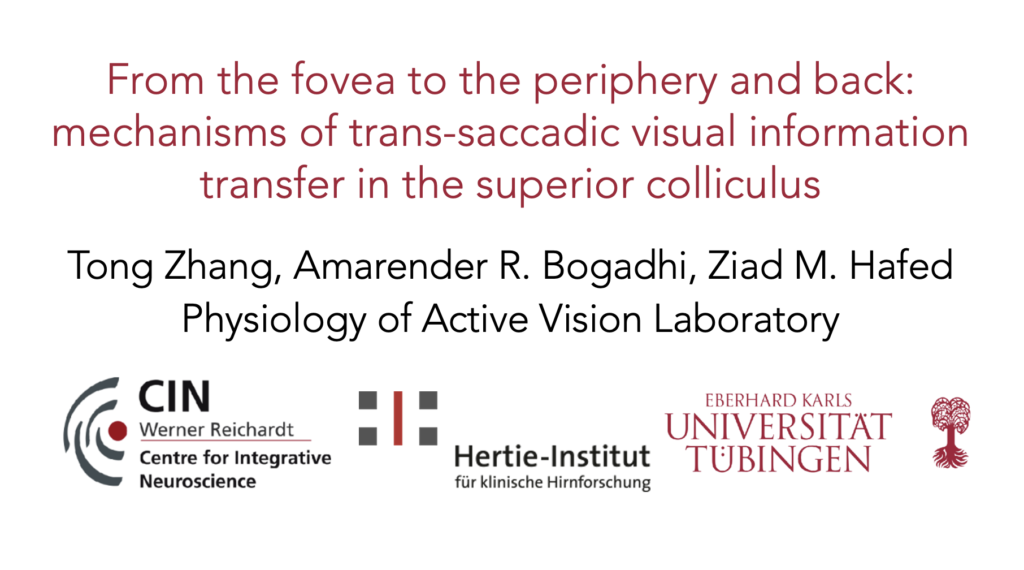Our entire lab was very happy to participate in this year’s Primate Neurobiology Conference, which took place at the German Primate Center in Göttingen. This was the first time that this conference happened after it was interrupted for several years by the pandemic, and we look forward to hosting next year’s version right here in Tübingen once again!

Our lab had a total of 5 presentations about exciting results and ongoing experiments that we have.
1) Sensory tuning in neuronal movement commands
Matthias Baumann presented a poster about the exciting observations documented in this paper, in which we found that eye movement generation commands of the superior colliculus embed within them a visual sensory representation. These results overturn many dogmas about the role of the superior colliculus in rapid eye movement generation. Most importantly, they might be exactly the source of an exciting prediction signal that Tong Zhang is discovering in her work (see the fifth presentation below).
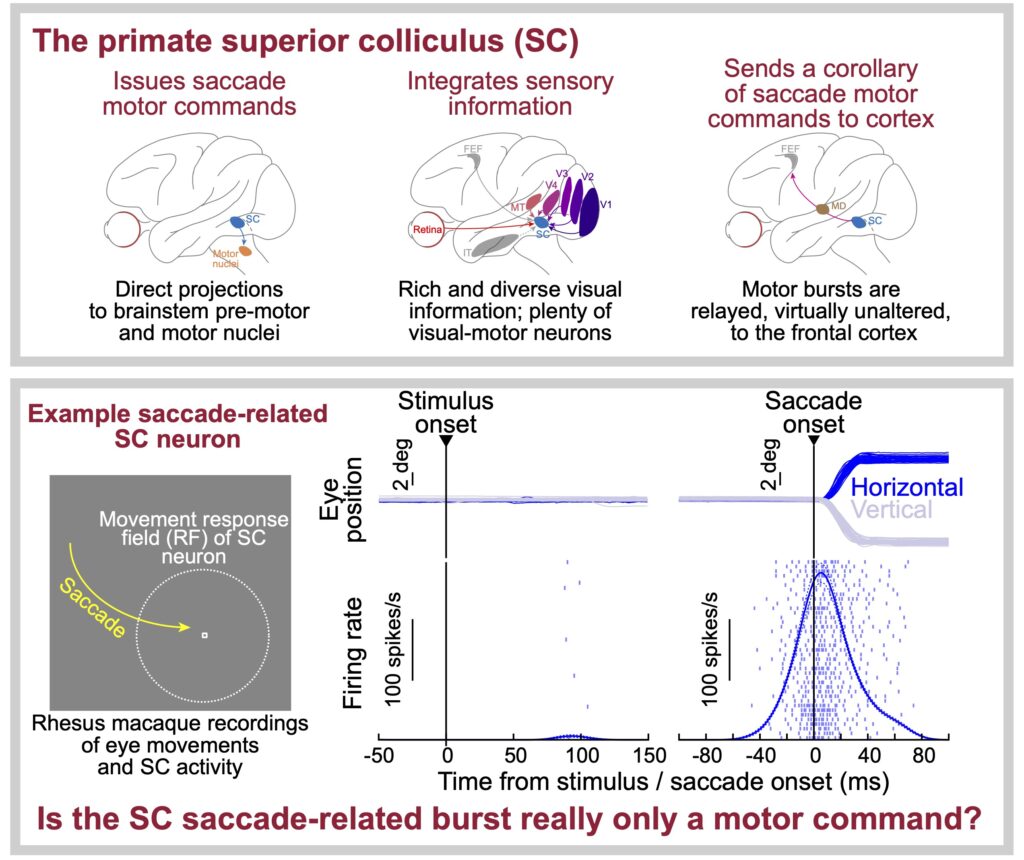
2) Short-latency ocular position drift responses
A few years ago, we discovered that tiny ocular position drifts can show very robust responses to visual stimuli, as described in this paper. Here, we exhaustively characterized the feature tuning properties of these responses. We found that ocular position drifts show clear dependencies on stimulus size, contrast, and position. These results inform very intriguing hypotheses about how ocular position drifts are controlled neuronally.
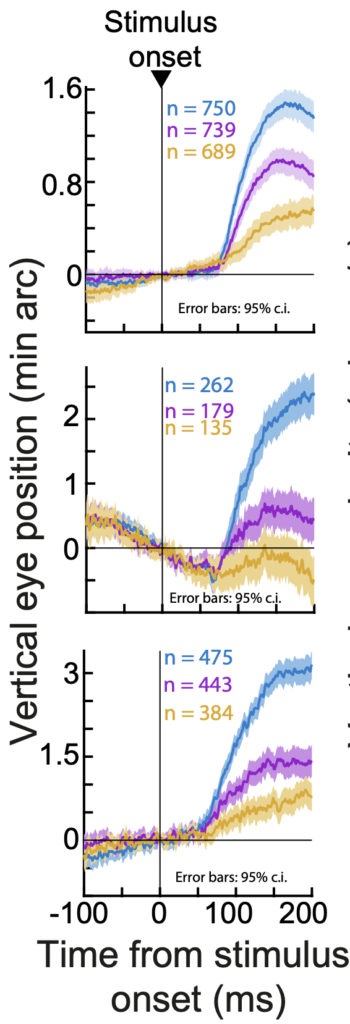
3) Neuronal mechanisms underlying short-latency ocular position drift responses
Not only did we characterize the feature tuning properties of drift responses above, but Tatiana Malevich also started unraveling the neuronal mechanisms underlying these responses. The most surprising, and disruptive, aspect of her results is that she may have discovered an unexpected set of brainstem neurons responsible for the ocular position drift responses. We’re actively continuing these experiments, which we believe are very important to document.

4) Primary visual cortex and superior colliculus visual response properties: are the latter really inherited from the former?
Yue Yu next tackled a very important problem, which we recently highlighted in this article. Namely, given that the superior colliculus exhibits rich, feature-tuned visual responses, and given that it receives a lot of anatomical input from the primary visual cortex, then are collicular visual responses merely inherited from the primary visual cortex?

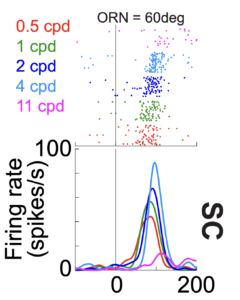
To answer this question, Yue recorded neuronal activity from both the primary visual cortex and the superior colliculus in the very same monkeys seeing the very same images. She then looked for similarities and differences between the visual responses of the two brain areas. She discovered very intriguing differences between these two brain areas, which discredit the general assumption that superior colliculus merely inherits the visual properties of the primary visual cortex.
One very interesting difference that she found has to do with the processing of visual details in images. In the superior colliculus, she replicated our earlier observations (in this paper) that responses to low spatial frequency images are always earlier than those to high spatial frequency images, even if the neurons preferred (i.e. we more sensitive to) the high spatial frequency images. However, in the primary visual cortex, this was absolutely not the case. We think that this difference between the two areas might have to do with how quickly we might want to generate saccadic eye movements to low spatial frequency images.
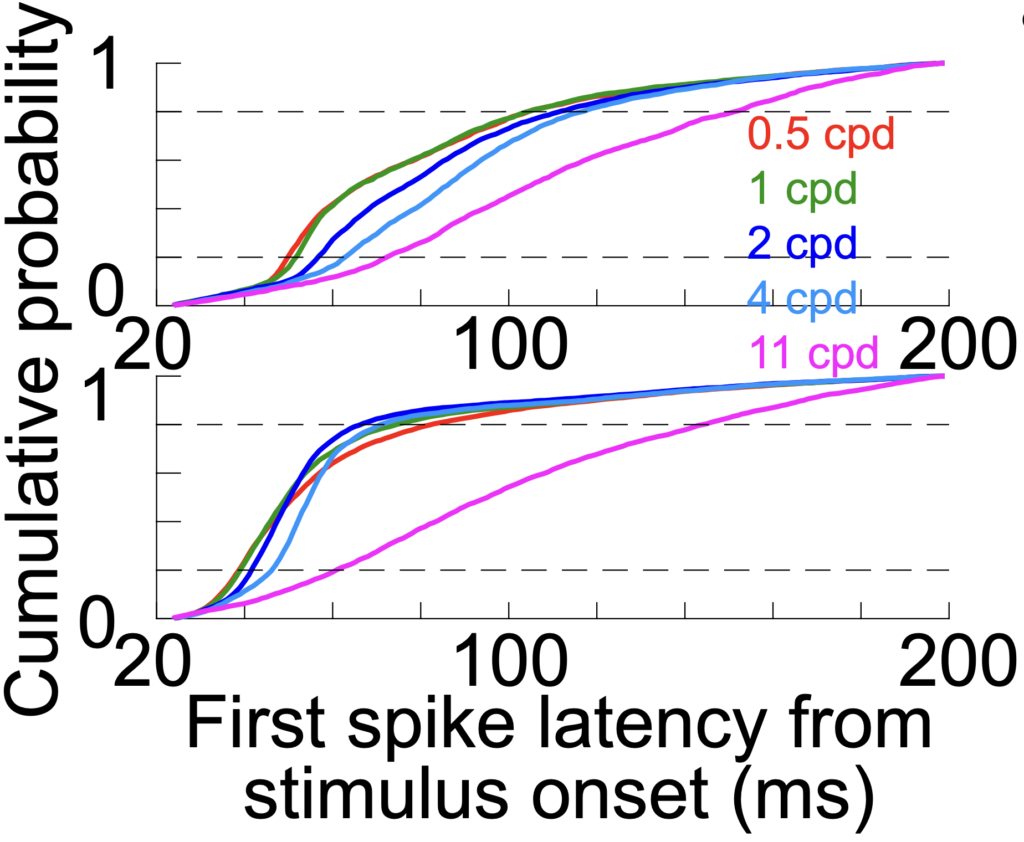
5) Predictive coding from the periphery to the fovea across saccadic eye movements
Last, but certainly not least, Tong Zhang gave an absolutely brilliant talk about her work on trans-saccadic vision! She showed, among other things, how neurons in the foveal representation of the superior colliculus, may receive a prediction about the visual appearance of peripheral saccade targets, even before the saccade is completed. This allows the neurons to signal a prediction error (as in classic predictive coding theories) that can help maintain perceptual stability across saccades, despite the rapid changes in retinal images that take place. It is very intriguing to consider the possibility that the saccade-related prediction signal itself can originate in the superior colliculus saccade motor bursts, which would exactly predict the Matthias Baumann results above! Stay tuned for Tong’s presentation at the Vision Sciences Society Annual Meeting in May 2023!
